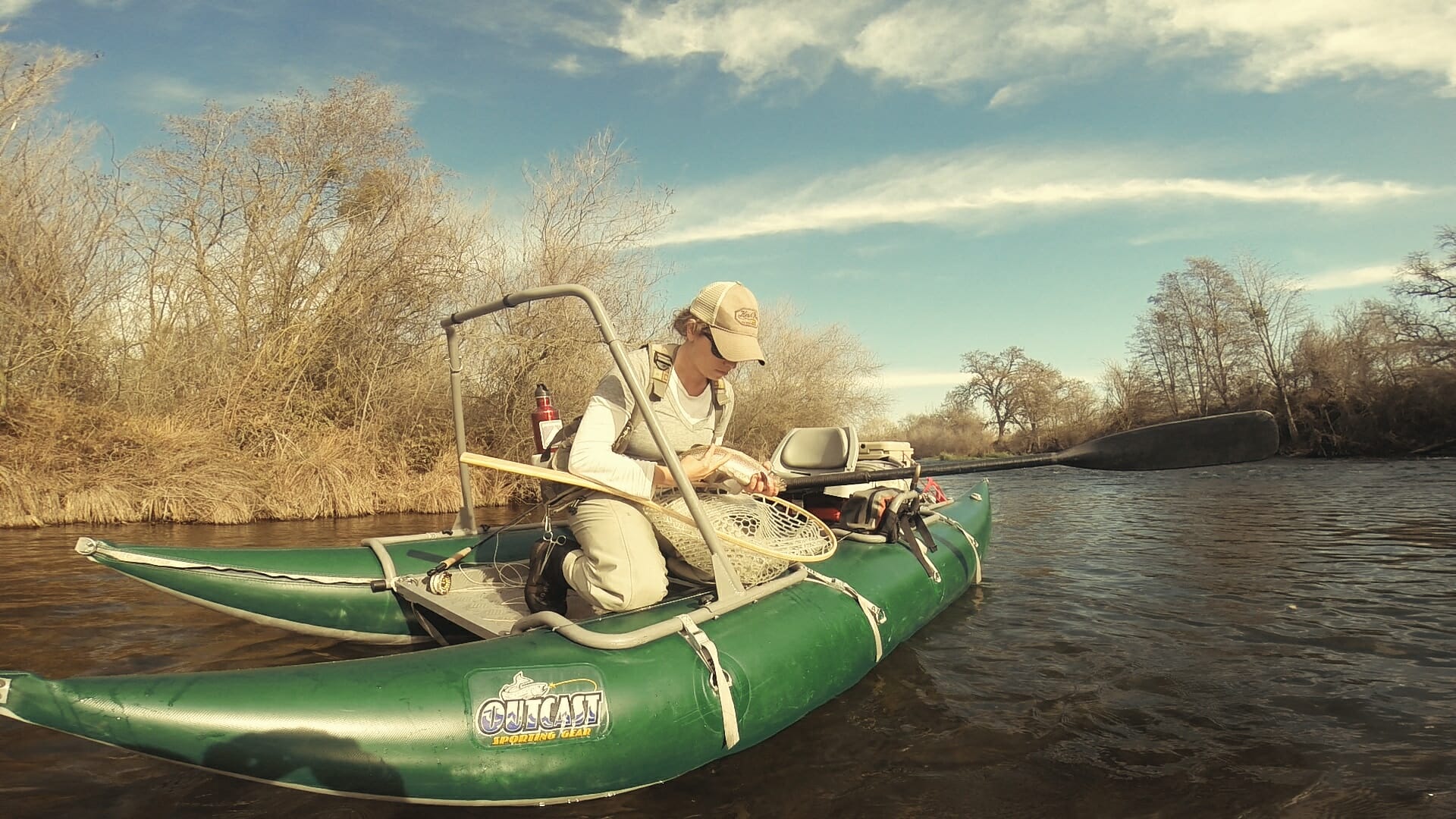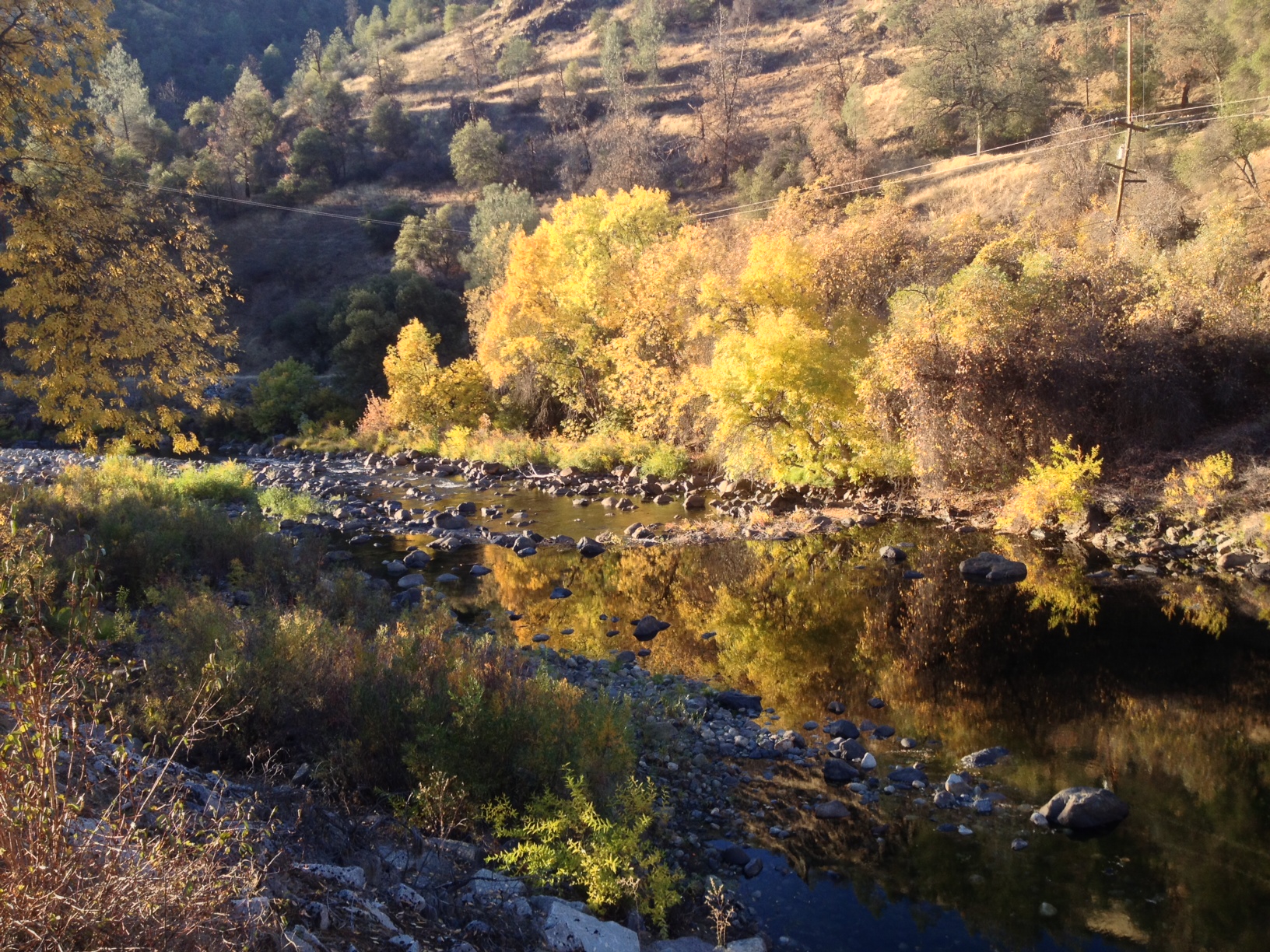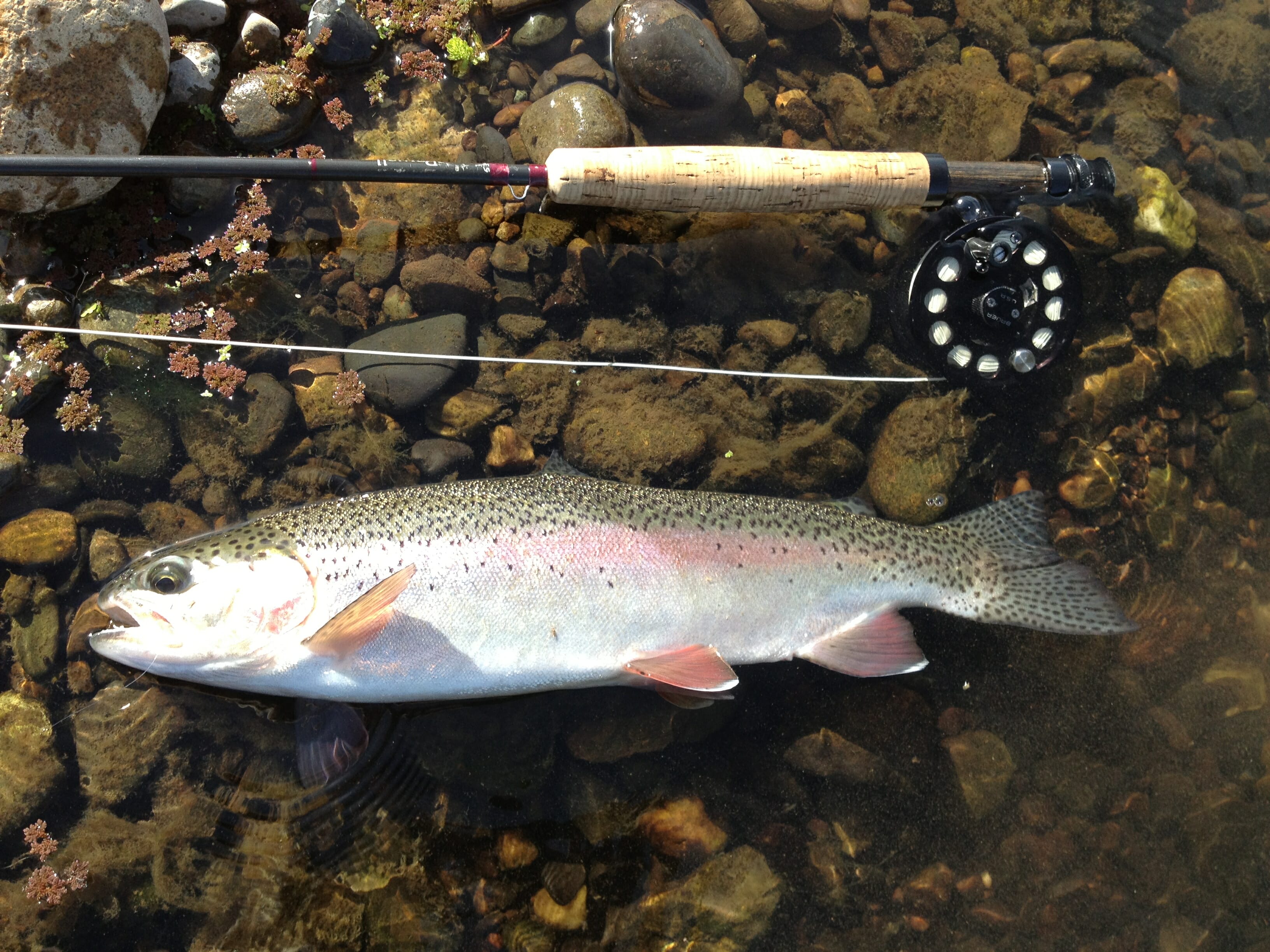Salmon, steelhead, and resident trout such as this one will benefit from higher flow requirements in the major tributaries to California’s San Joaquin River, including the Merced, Tuolumne, and Stanislaus Rivers.
Today the California State Water Resources Control Board released a draft proposal to update water quality requirements for streamflows in major tributaries to the San Joaquin River (the Stanislaus, Tuolumne, and Merced Rivers). The proposed Substitute Environmental Document (SED) was prepared by water board staff.
Trout Unlimited has been engaged in the process of developing the SED since its inception, largely through Chandra Ferrari, our Water Policy Director, and Rene Henery, our Science Director. TU’s previous comments on the SED can be found here.

This is the first proposal to update flow and water quality standards in these rivers since 1995 and is long overdue. In the meantime, salmon and steelhead populations in these waters have declined significantly.
(R) Fishing the Merced River.
Currently, 80-90% of the flow in these rivers is diverted in some years, and in some months more than 95% is diverted. The best available science presented to the water board in recent years indicates that 50-60% of “unimpaired” flows are necessary to restore these rivers and their salmon and steelhead populations, according to the California Department of Fish and Wildlife (2013) and the SWRCB’s 2010 Public Trust Flows report.
The present level of diversions is unsustainable if we are to conserve our dwindling Central Valley salmon and steelhead runs. Even with the proposed new flow standards we are talking about less than half a river.
TU is pleased that the SWRCB has finally released the environmental analysis. We will encourage the board to adopt final revised flow standards that provide meaningful benefit for cold water fisheries as well as for human needs.

We also appreciate that the SWRCB chose to recognize biological objectives as a useful adaptive management tool. We will continue to encourage the board to implement an adaptive management program that is guided by specific and measurable biological goals and objectives. This would allow us to evaluate effectively how fish and wildlife are responding to measures intended to meet the new standards and to determine whether changes are warranted.
While lack of water is not the only variable driving salmon and steelhead declines, it is the master variable. Other factors that influence fish populations (predation, habitat loss and degradation, water quality) will all be improved with augmented flows.
It is vitally important that decisions affecting our rivers, fisheries and water supply are driven by quantifiable scientific standards that allow us to objectively assess whether targets are being hit and standards met. We expect the SWRCB to base its final decision on the best available science for the San Joaquin so that we can have real hope of rebuilding salmon and steelhead runs.



